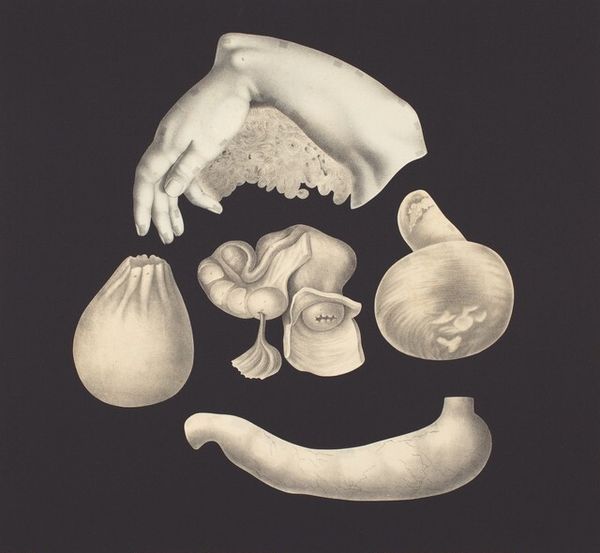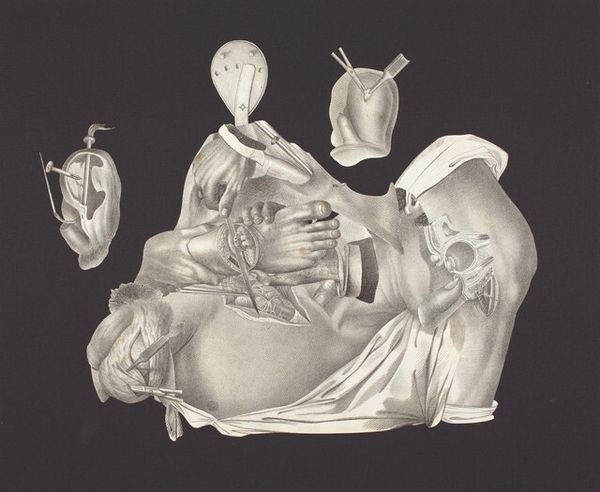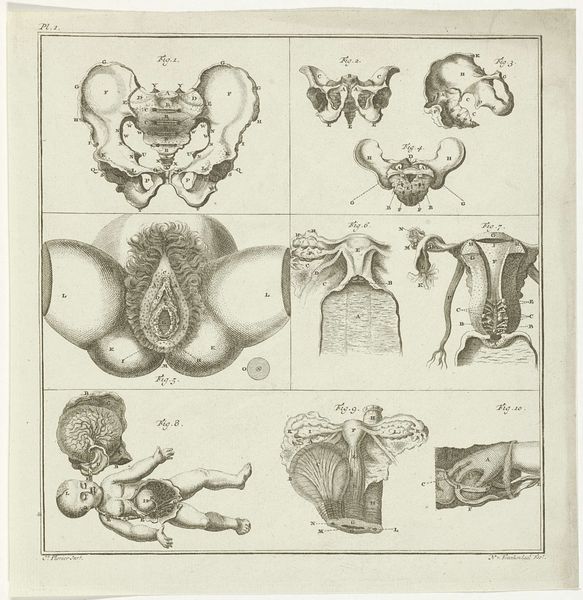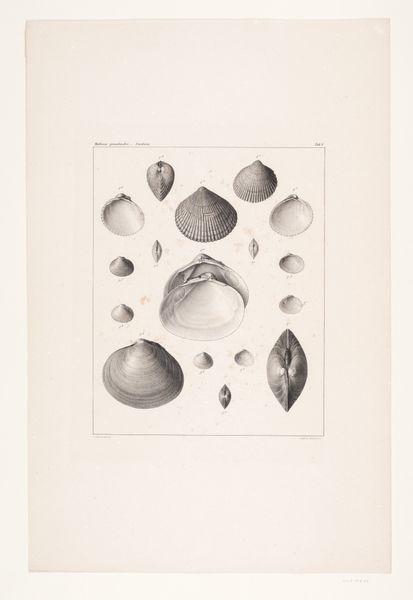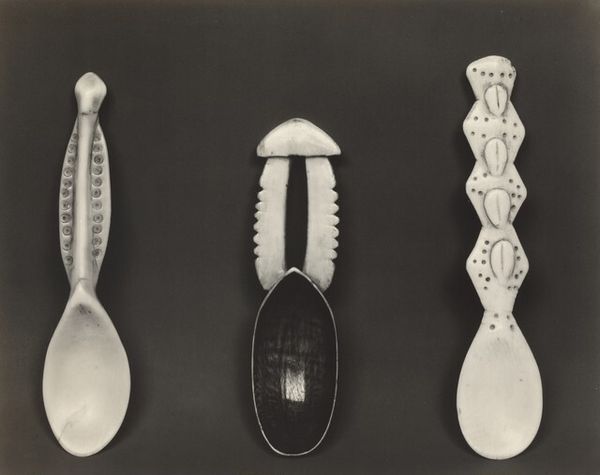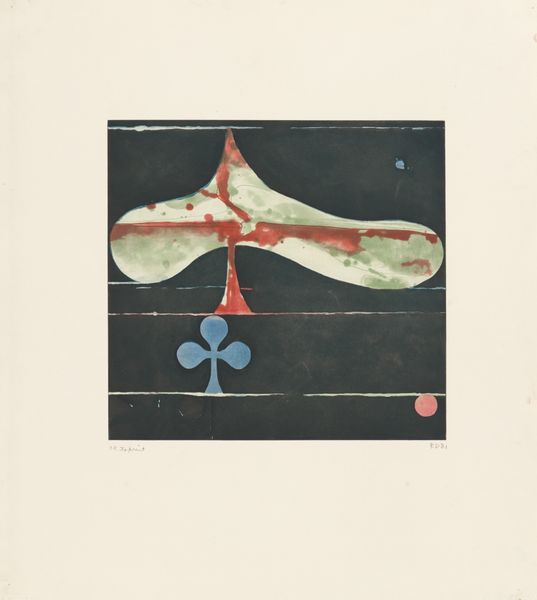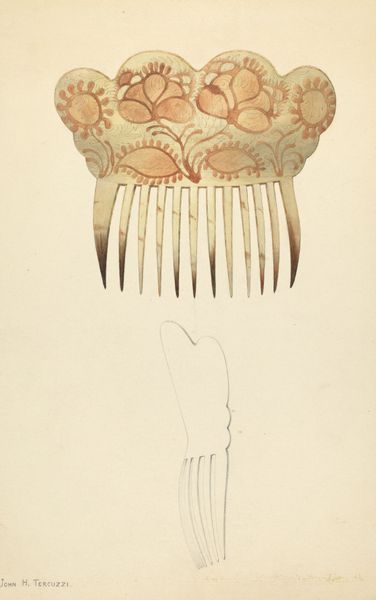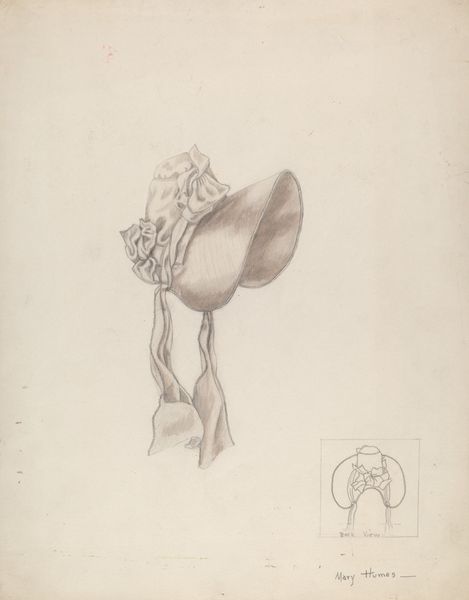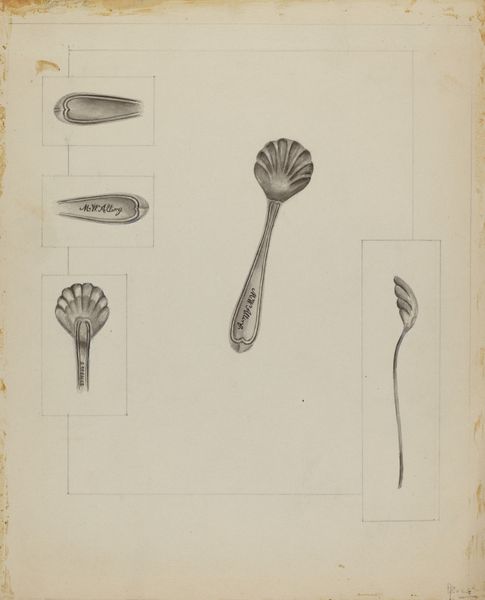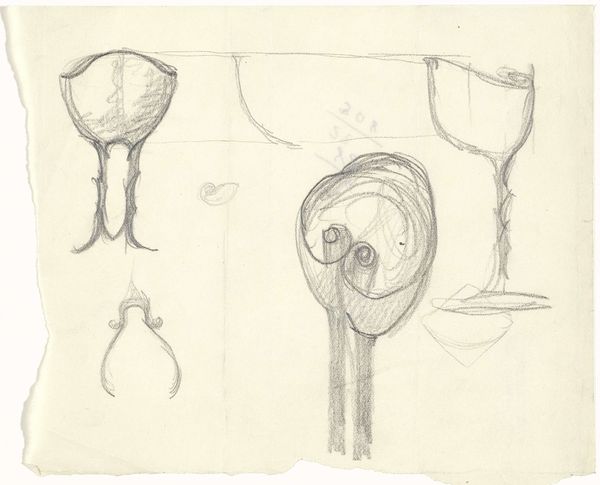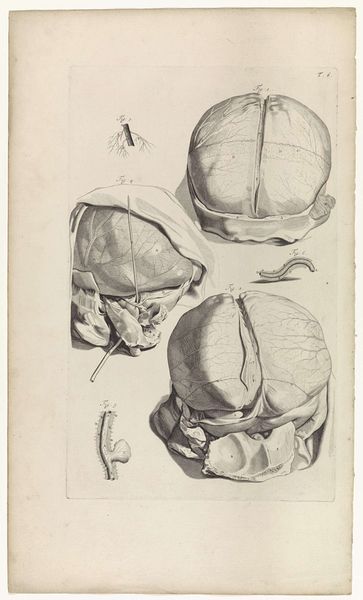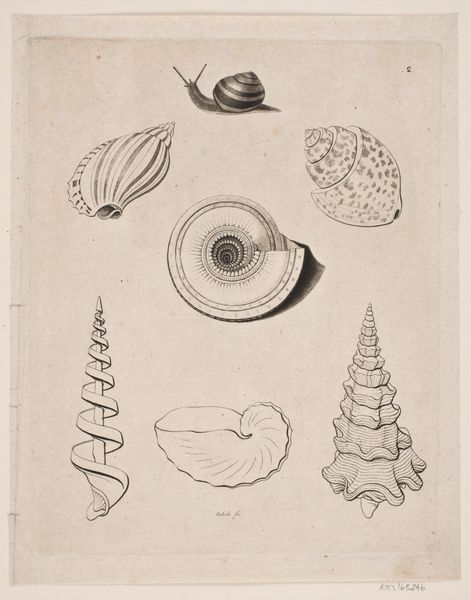
print, photography
#
still-life-photography
# print
#
caricature
#
abstract
#
photography
#
modernism
Dimensions: image: 36 x 42.4 cm (14 3/16 x 16 11/16 in.) support: 49.8 x 55.6 cm (19 5/8 x 21 7/8 in.)
Copyright: National Gallery of Art: CC0 1.0
Curator: Frederick Sommer’s “Lacryma,” created in 1992, strikes me as incredibly melancholic, almost a post-mortem collection. The array of objects feels so sterile and devoid of life. Editor: Sterile is a good word. There’s something clinical about it. Given the subject matter and the processes Sommer employed, it really makes you think about what he’s doing and what's left unsaid. Sommer worked a lot with the idea of invented realities through both composite photography and camera-less processes. What do you think this says about his view on what is real? Curator: The juxtaposition of these seemingly biological specimens against the void certainly feels intentional. Are they remnants, relics, or imagined forms? Knowing Sommer's engagement with surrealism, it blurs that line deliberately. This challenges our perception, questioning what is scientifically accurate versus artistic invention. How might he have wanted the audience to feel confronting this ambiguity? Editor: Ambiguity is precisely it. Looking closely, one sees subtle manipulations. The grayscale is smooth, but harsh shadows suggest staging, almost like a dissection tray but one ready for sale. How does the materiality and technical execution impact the viewer’s interpretation? The smooth paper creates this surface but makes you think about consumption. Curator: That contrast between precision and potential illusion is powerful. It encourages us to question not only what we see but also how museums or scientific institutions validate certain imagery, blurring the boundaries between fact and constructed reality. The arrangement and title "Lacryma" points us towards considering the institutional authority granted to photographic images. It becomes less about an image as is, and more about its social weight and place within this structure. Editor: The materiality is part of the institution too, though. That particular paper stock would’ve been selected not just for visual effect but as a marker of value, differentiating it from ephemeral image culture, and solidifying its place in the world of “high art.” By using such pristine presentation and, really, selling them, it transforms the image. Curator: I see what you mean. The market shapes our reception, lending a preciousness to objects. So, ultimately, "Lacryma" confronts us with the inherent artifice in how we interpret images. Editor: Exactly, Sommer is laying bare the constructed nature of the gaze itself, through the arrangement, the making and the object it becomes. This pushes us to question the material processes and the authority of image making, doesn't it?
Comments
No comments
Be the first to comment and join the conversation on the ultimate creative platform.
